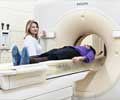- Development of new software can help identify and measure the severity of small vessel disease
- Small vessel disease is a common neurological disease and one of the most common causes of stroke and dementia affecting older people
- The newly developed software effectively detected and measured a marker of SVD and gave scores based on the severity of disease ranging from mild to severe
- Provide the best treatment to patients more quickly in emergency settings
- Predict whether there are any chances of developing dementia
- Develop more personalized medicine
The new software developed is a first scan reading tool that could be useful in a comprehensive routine assessment of scan datasets and after several testing, this could be effectively used to assess patients with stroke at hospital admission, said Professor. Joanna Wardlaw, Head of Neuroimaging Sciences at the University of Edinburgh.
Small vessel disease (SVD)
Small vessel disease is a common neurological disease affecting older people which decreases the blood flow to the deep white matter connections of the brain, thereby damaging and destroying the brain cells.
SVD may cause
- Stroke
- Dementia
- Mood Disturbances
SVD increases with
- Age
- Hypertension
- Diabetes
Details of the Study
Dr. Bentley suggests that this software could help influence doctors decision-making in emergency neurological conditions and lead to more personalized medicine. For instance, in stroke, treatments such as 'clot-busting medications' can be quickly administered to unblock an artery. But, these treatments can be unsafe by causing bleeding, which becomes more common with an increase in the amount of SVD. The software could be utilized in future to determine the possible risk of hemorrhage in patients and doctors can decide on a personal basis, along with other factors, whether treatments like clot busters can be used or not.
Dr. Bentley also adds that the new software can help estimate the possibility of patients developing dementia or immobility, due to slowly progressive SVD. This would alert doctors to identify the potentially reversible causes such as high blood pressure or diabetes.
The study mainly used historical data of 1082 CT scans of stroke patients across 70 hospitals in the UK between 2000-2014, which includes cases from the Third International Stroke Trial.
Findings of the Study
The new software detected and measured a marker of SVD, and gave scores indicating the severity of disease ranging from mild to severe. The research team compared the results to a panel of expert doctors who analyzed the same scans for SVD severity. The level of agreement of the software with the expert doctors was as good as agreements between one expert doctor with another.
In 60 cases, the research team obtained MRI and CT in the same subjects and used the MRI to measure the exact amount of SVD. They observed that the software was 85 percent accurate at predicting the severity of SVD.
The research team is currently using similar approaches to measure the amount of brain shrinkage and other types of conditions commonly diagnosed on brain CT.
Source-Medindia















